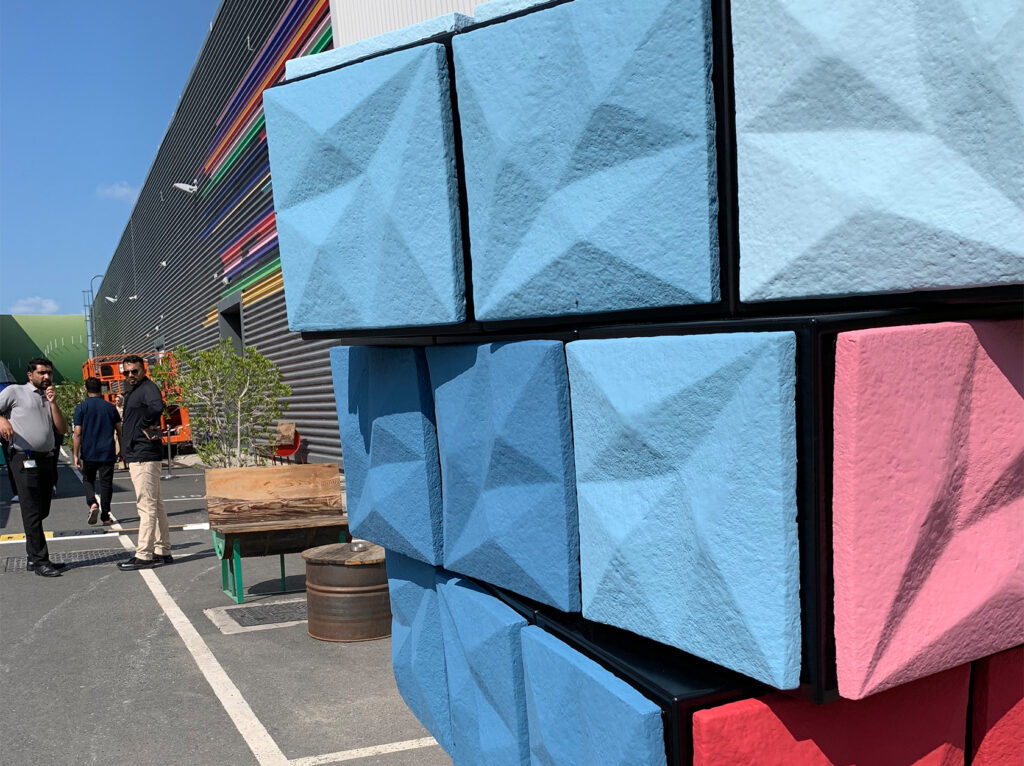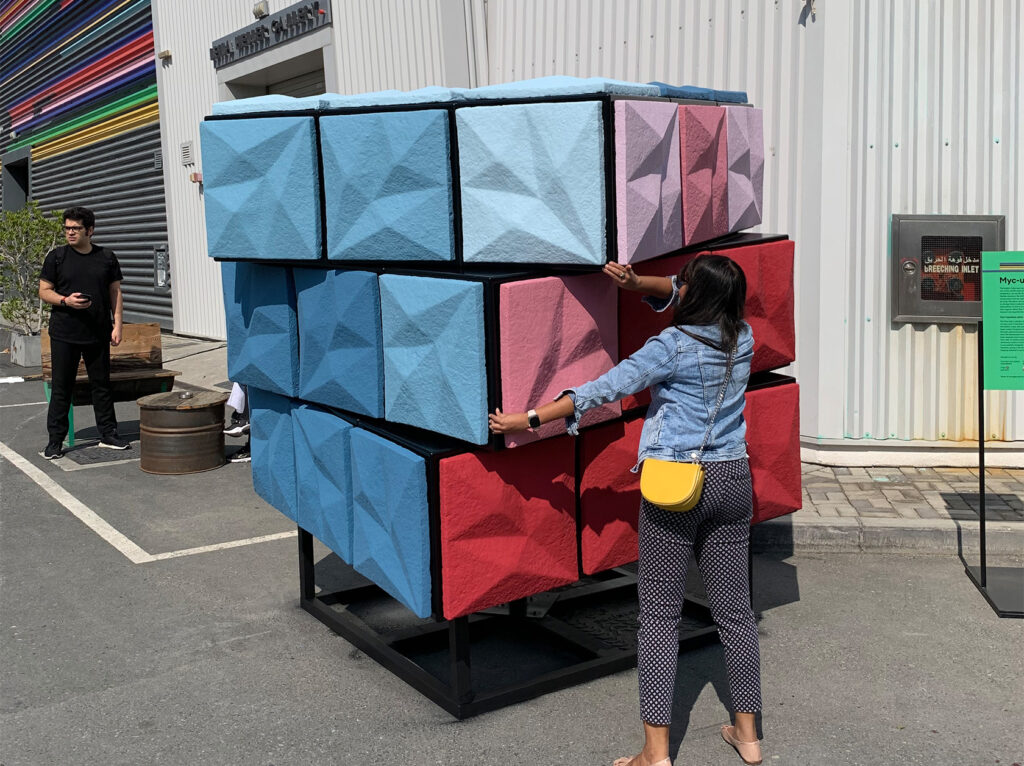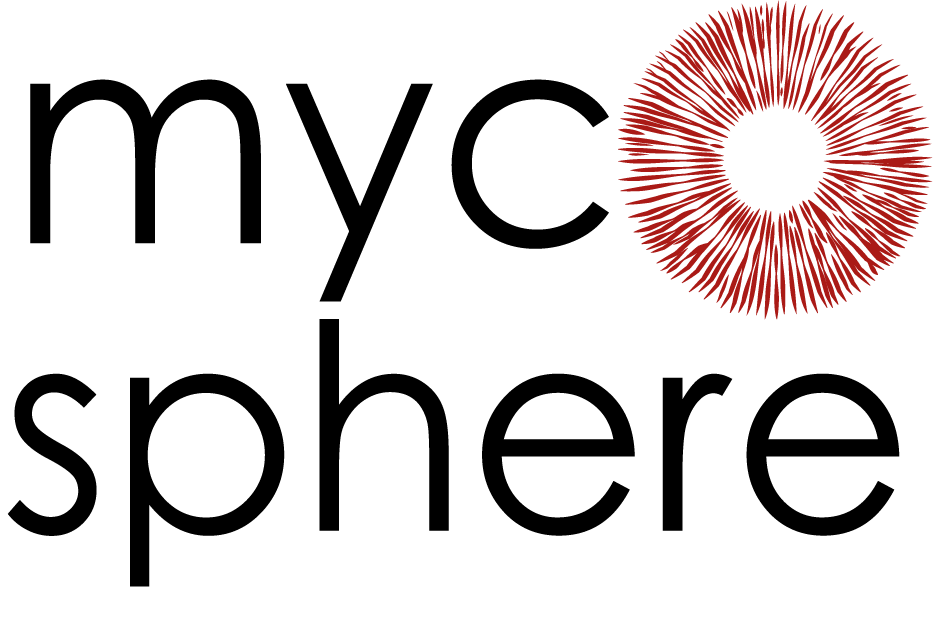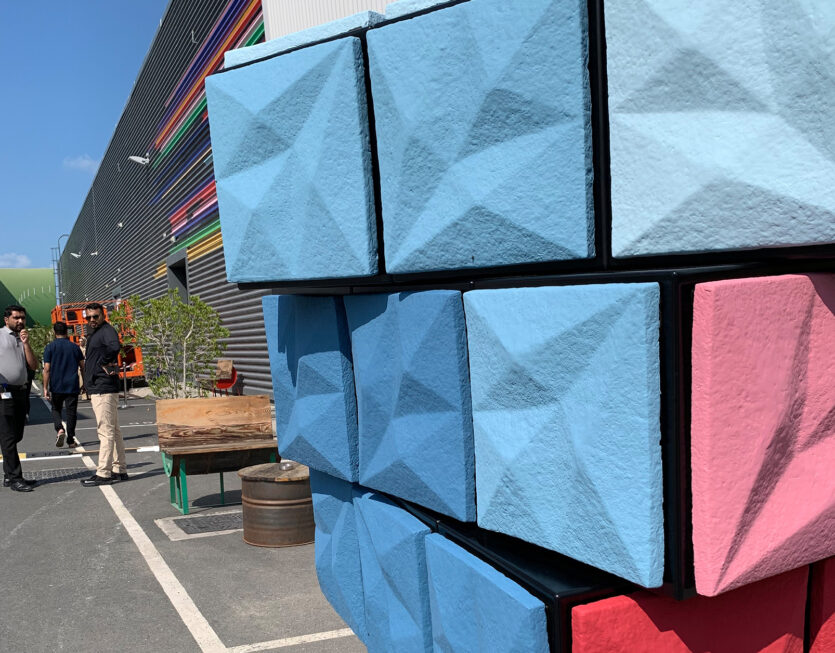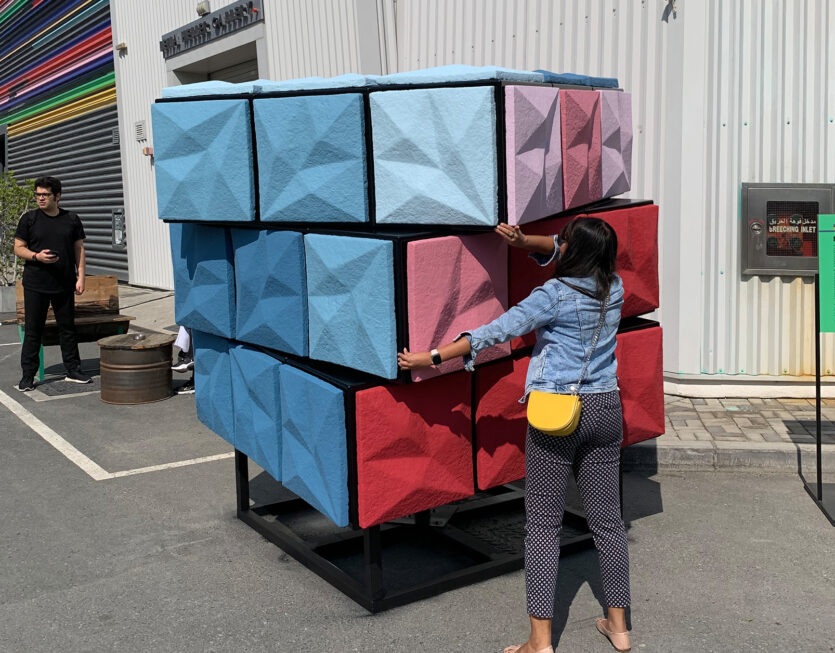Myc-ubik 1
- Quoz Art Fest, Alserkal Avenue
What if the Rubik’s cube was made from mycelium?
In this installation, we use the Rubik’s Cube as a modular and flexible structure cladded with mycelium panels, to challenge the usual material and promote the use of natural material made by fungi.
The Rubik’s Cube was invented in 1974 by Ernõ Rubik, a Hungarian architecture professor. Rubik used the Cube as a learning exercise to teach students about 3D spaces. Little did he know at the time that his ‘Magic Cube’ would become one of the world’s most famous puzzles of all time!
Can mycelium solve the material puzzle?
Not only these mycelium panels have a lower carbon footprint, being produced from waste and through natural and regenerative processes, but these panels are reused from the Netherlands’s Pavilion at Expo 2020. They have been restored using biomaterial, given a second life, and incorporated into the design of the Myc-ubik. To further eliminate waste at the end of its life cycle, the Myc-ubik structure is purposefully and creatively designed to be dismantled and reused as pieces of furniture, giving them the chance to breathe another life once more. Keeping material in use is at the heart of circular economy.
Was the Myc-ubik as thought provoking as the Rubik’s Cube?
Myc-ubik was installed twice; once as an installation at Quoz Art Fest in Alserkal Avenue in Dubai, and once more to become the first mycelium public art in the UAE to be displayed on Al Maryah Island in Abu Dhabi next to Abu Dhabi Global Market (ADGM).
